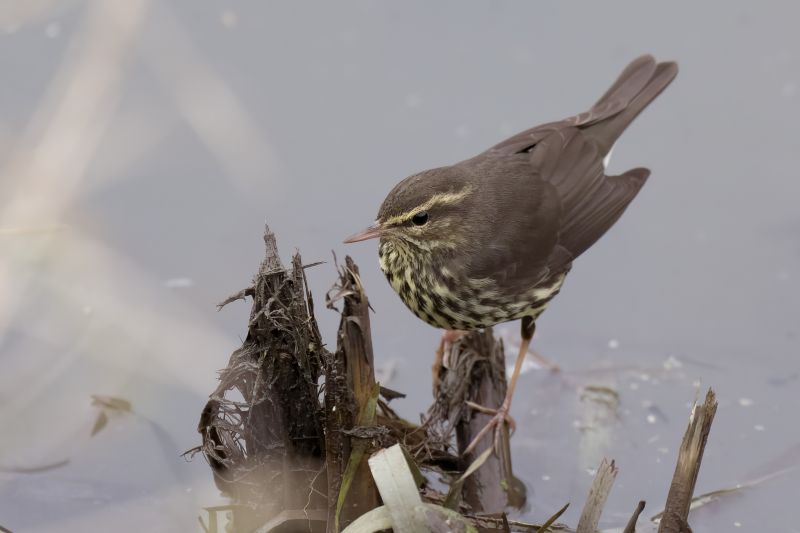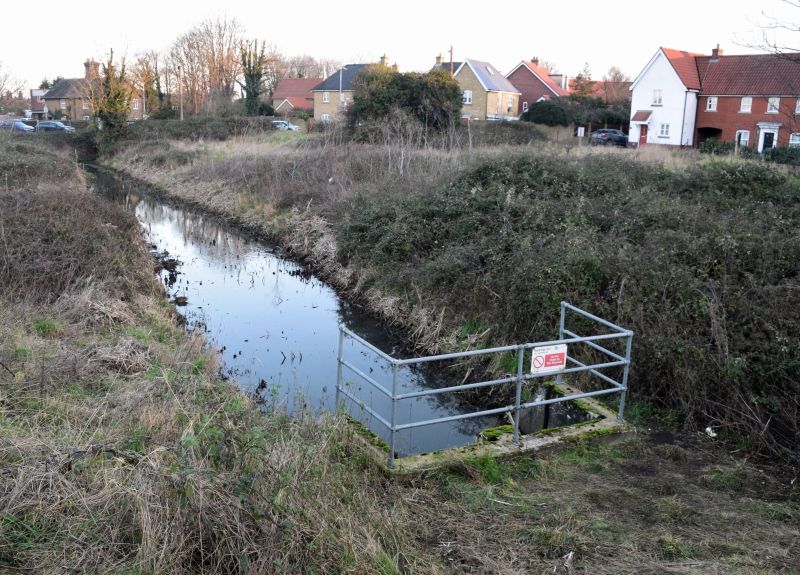I will admit to knowing nothing of the first of these two birds prior to one announcing itself in a residential area of the Blackwater port of Maldon six days ago. Being only the third mainland British record and a huge local mega, my first reaction was typically to wait for things to calm down a bit before deciding whether to go. But having worked several extra shifts over the festive period, during which the weather was very wet, I rather wished to hit the road for some welcome spirit cleansing going into the current cold and sunny midwinter week. And with this item’s reliability growing as the frenzy around it lessened over the weekend, it became at just over 100 miles from home the best candidate.
My quest though nominally a “Thrush” is actually a north American Warbler, common within its home range, that to my untrained eye resembles a miniature Redwing without the red bits, or perhaps a larger Pipit. I’ve never been one for plumage topography after all! Recent reports suggested early morning would be the best time to connect, so I headed off shortly before 6am, arriving on site just over two hours later. Viewing was said to have become easier once people learned not to approach the bird’s favoured spot too closely. This being a short distance away from the housing estate of the initial reports, in which visiting twitchers have been urged constantly not to park, my prior concerns over residential birding had dissipated.
Plenty of roadside space was available in a neighbouring industrial area, from where it was a short walk down one side of Heybridge Creek (TL858076), then over a bridge and back up to the twitch site. On my joining one end of the line, the first man there put me onto the Northern Waterthrush (pictured below) foraging busily on one side of the creek before us. So this was an immediate connect. Further along, as expected was Adam (see here) who had stayed overnight locally, not being one for pre-dawn journeys himself, amongst a sizeable gathering of near exclusively male birders.

The object of our attention had been showing well since first light, and continued to do so for around 20 minutes more, working both sides of the creek (pictured below), before flying over our heads into small trees a couple of times, then back in amongst the adjacent houses. Such an early routine had become established over the previous few days, and I along with all those present now had clearly timed things correctly. The habitat and poses in which I observed the Waterthrush were just like in Richard’s excellent image from a day earlier, that he has very kindly allowed me to use. Yesterday the bird re-appeared at roughly two hour intervals through the rest of the morning, but then not again until late afternoon. Today that scenario was largely repeated, plus an early afternoon cameo.
There is some speculation over how long this Nearctic vagrant may have been here unnoticed before visiting the president of the Essex Birdwatching Society’s garden and being announced to the wider green clad optics carrying community. It could have arrived with last September’s un-precedented fall of north American passerines and stayed to over-winter, and there have been more trans-Atlantic storms since.
Northern Waterthrush is largely a ground dwelling species, usually seen near still or stagnant water as today, feeding on insects and other small invertebrates at stream or pond edges. The jizz is characterised by walking not hopping, and constant bobbing of the tail. Warblers such as this spending the winter in the British Isles is by no means without precedent, if they can find suitable habitat with a food source such as the site pictured above must provide.
From Heybridge it was just 12 miles to Abberton Reservoir, where a Nearctic Canvasback duck of unknown provenance has been present since early December. I had not bothered previously due to its likely plasticity, but now attempting the insurance tick made sense to fill more of the day. Things were never going to be as easy as that earlier success. This was one slightly different individual amongst a large and mobile flock of Eurasian Pochard that is now mostly viewed distantly, given the water body’s vastness.
Enquiring in the visitor centre I was advised; with strong, freezing winds blowing east to west through the complex, to check two of it’s more sheltered areas. I drew blank in both, before being informed by a local birder at one end that the carrier Pochards were massed at the other, too far offshore to reliably pick out the interloper. Persisting wasn’t my idea of enjoyment, so I headed home ahead of the evening M25 peak.
Birding is now very much a diminishing return for me, given my self-punishing need for the new and different – or “evolution” – within a distance range and financial constraints. But quality episodes such as the early morning raid of this post, that still at intervals arise, may remain the most motivating wildlife experiences of all. They do keep on coming from time to time. I had never heard of Northern Waterthrush before, it being my 383rd national and 519th WestPal bird … I have now!
Footnote: The Northern Waterthrush remained faithful to the routine described herein until 22nd January. The Canvasback, having last been identified two days prior to my visit, was not reported again until 27th.

